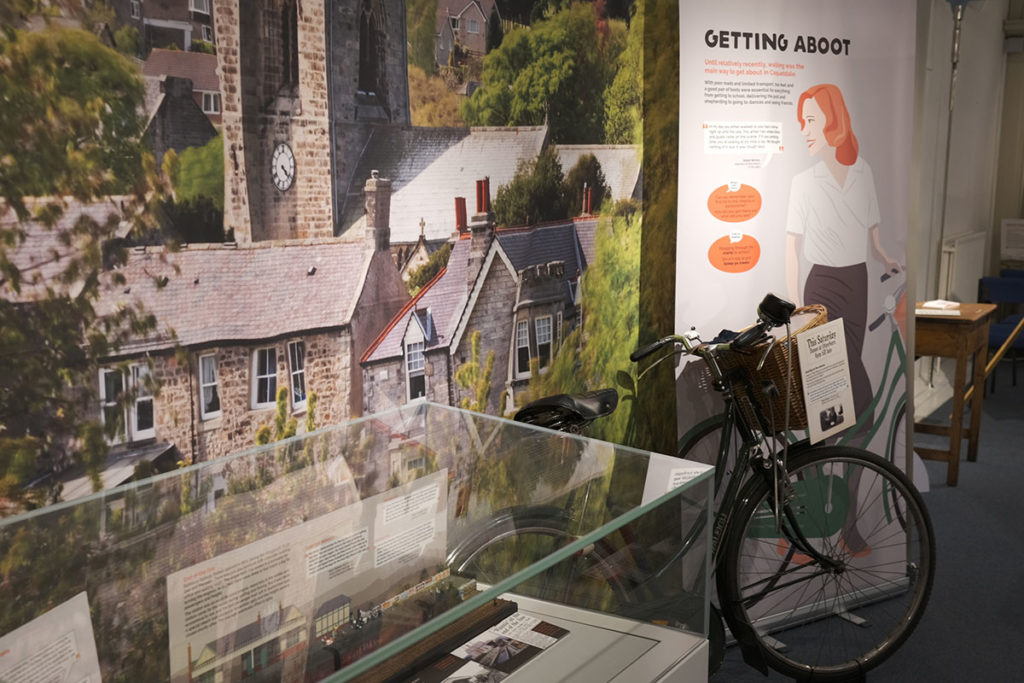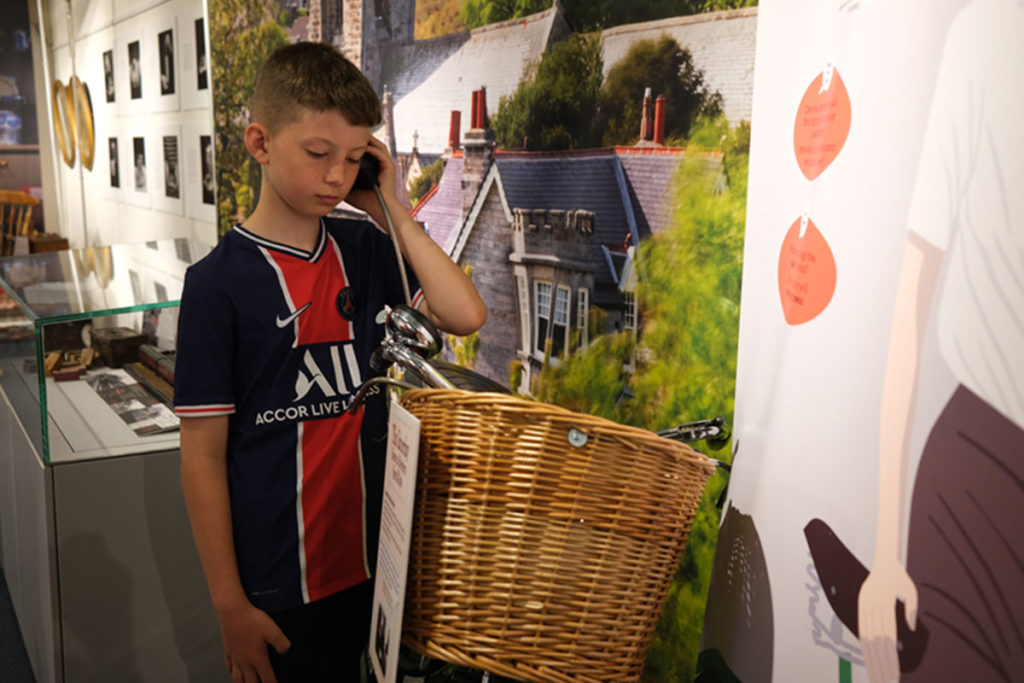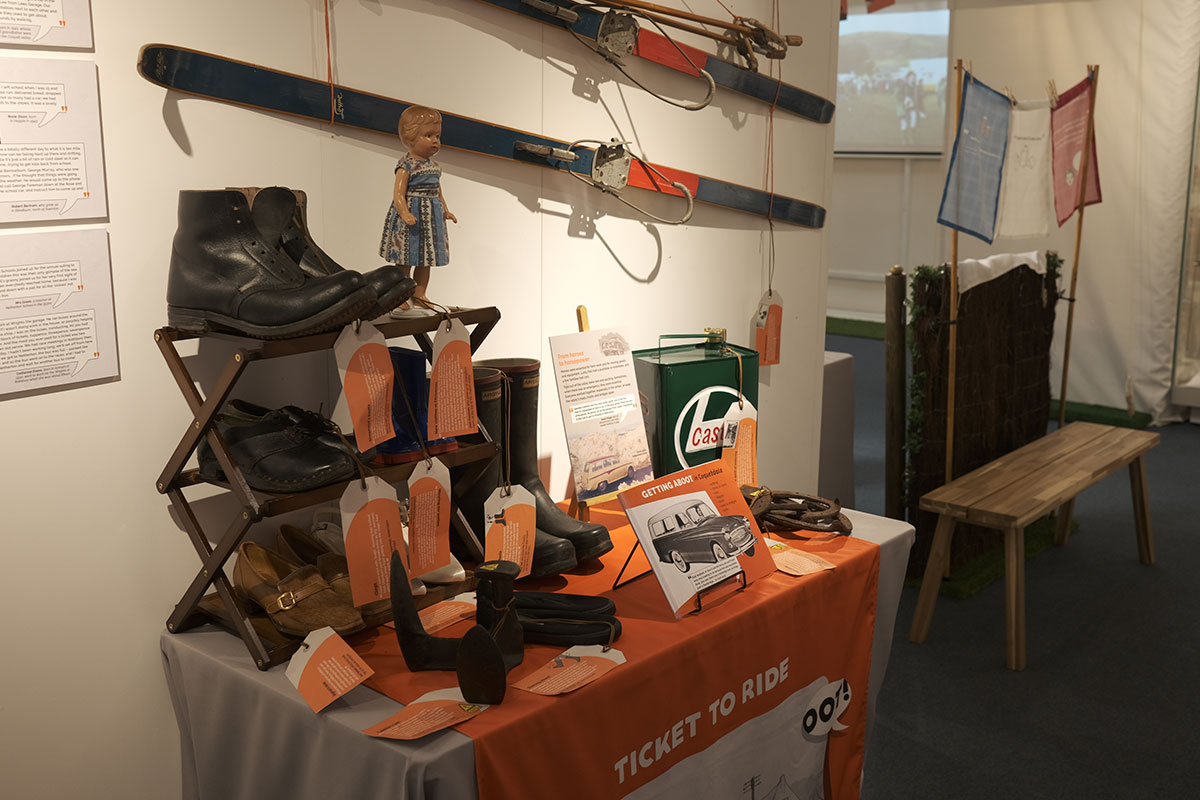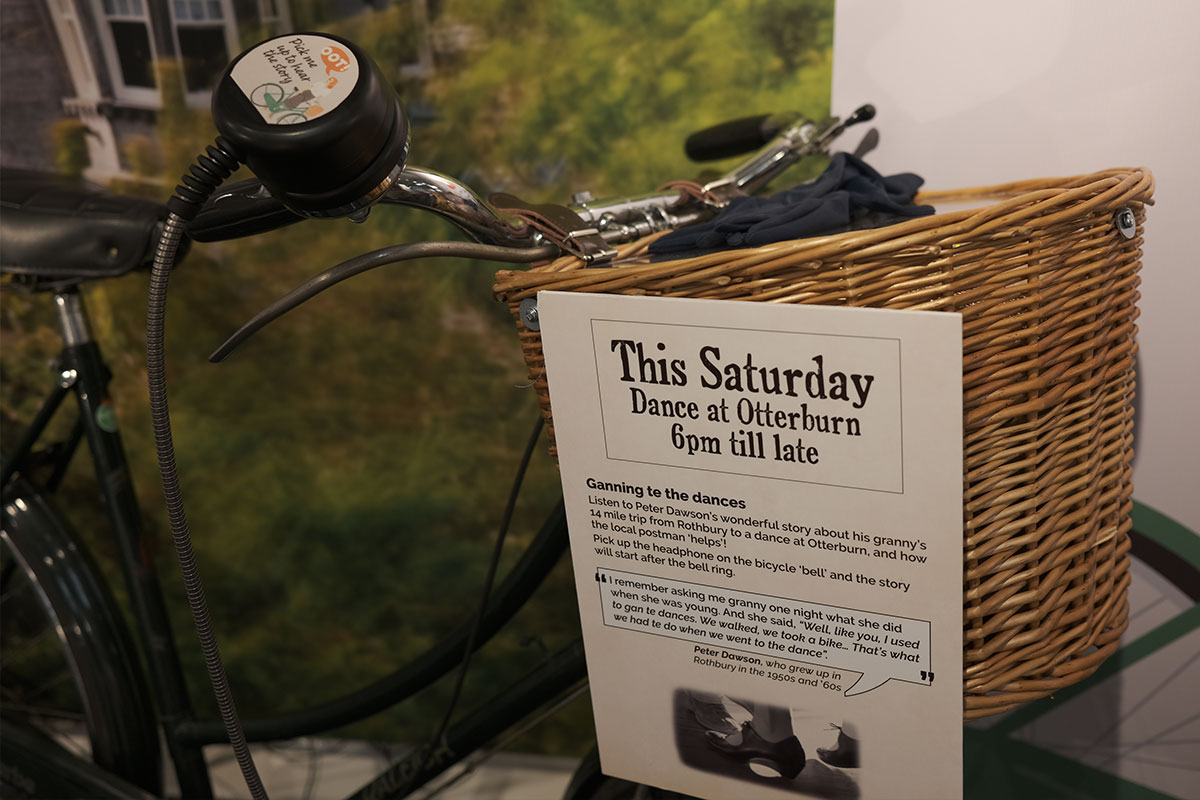Transport
Getting Aboot
Until relatively recently, walking was the main way to get about in Coquetdale.
With poor roads and limited transport, two feet and a good pair of boots were essential for everything from getting to school, delivering the post and shepherding to going to dances and seeing friends.
‘In my day you either walked or you had a horse, right up until the late ‘70s when two-wheel bikes and quads came on the scene. If it was lambing time, you’re looking at 20 mile a day. We thought nothing of it. Aye, it was tough days.‘
Robert Bertram, shepherd at Barrowburn in the 1960s.

Scroll down for more content from the exhibition
What’s your story?
Can you remember your first trip to the cinema or pantomime?
How did you get there and what did you see?
A bit of blether
Plodging through the clarts to school?
Divvn’t slip or ye’ll kowp ya creels!
From horses to horsepower
Horses were essential for farm work and for moving goods and equipment. Lucky folk had a pushbike or motorbike, and a few families had cars.
Trips out of the valley were rare and exciting. Sometimes, when there was an emergency, they were essential. Everyone worked together, especially in the winter, to keep the valley’s roads, tracks and bridges open.
‘Geordie Common was the local water bailiff, one of the first men in Coquetdale to have a car. In the days before there was any ambulances, he would run all the people from Upper Coquetdale if they had to gan to hospital in Newcastle.’
Jimmy Pringle, born at Wharton Farm, four miles outside Rothbury, in 1944.
Getting Aboot stories
To listen to this story, click the play button on the left.
Click here for text versions of the audio






